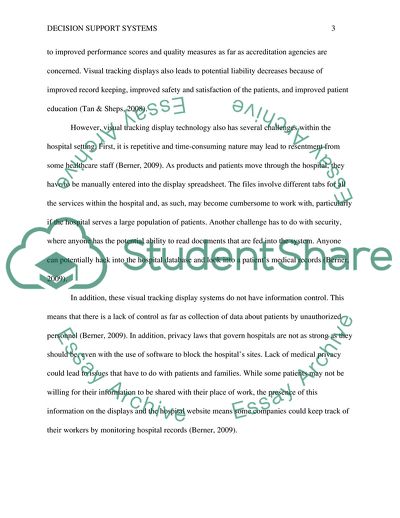Decision Support Systems Essay Example | Topics and Well Written Essays - 500 words - 1. https://studentshare.org/medical-science/1803463-decision-support-systems-in-hospitals
Decision Support Systems Essay Example | Topics and Well Written Essays - 500 Words - 1. https://studentshare.org/medical-science/1803463-decision-support-systems-in-hospitals.


